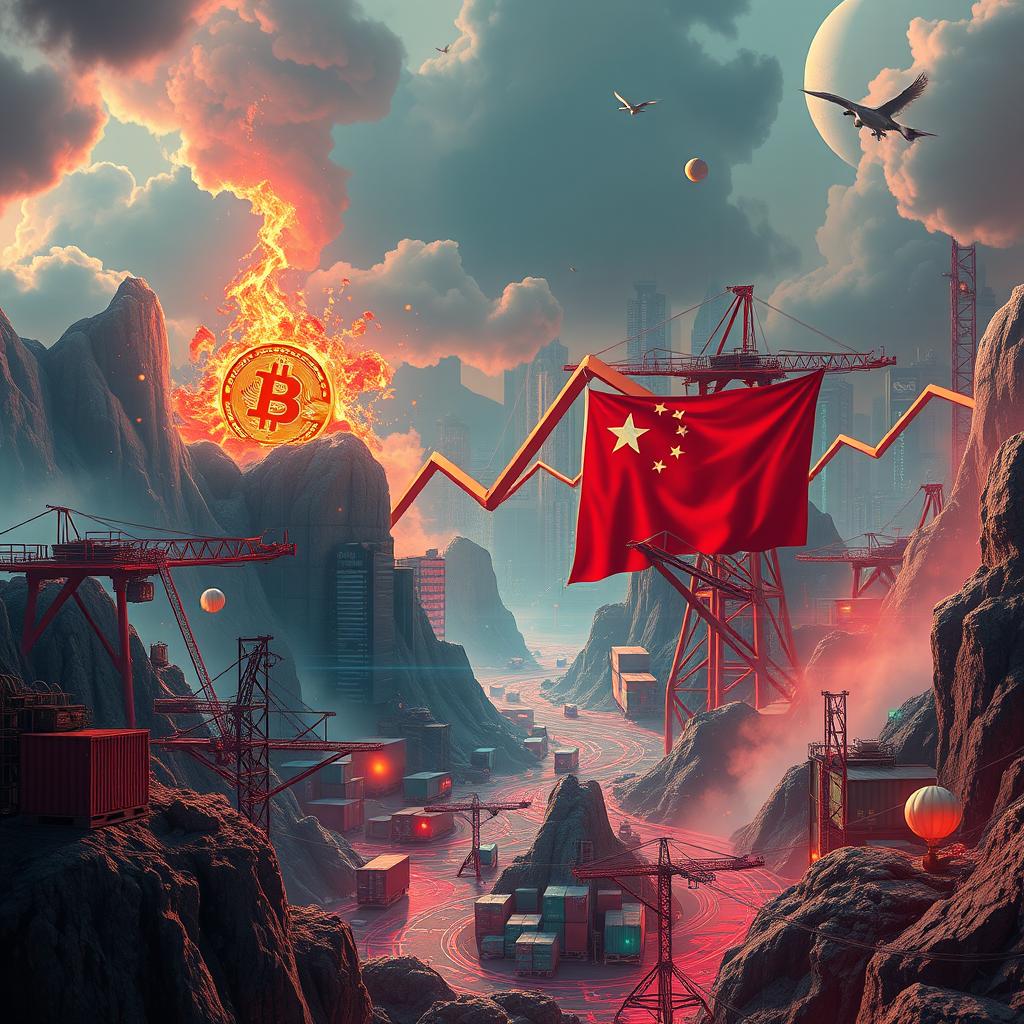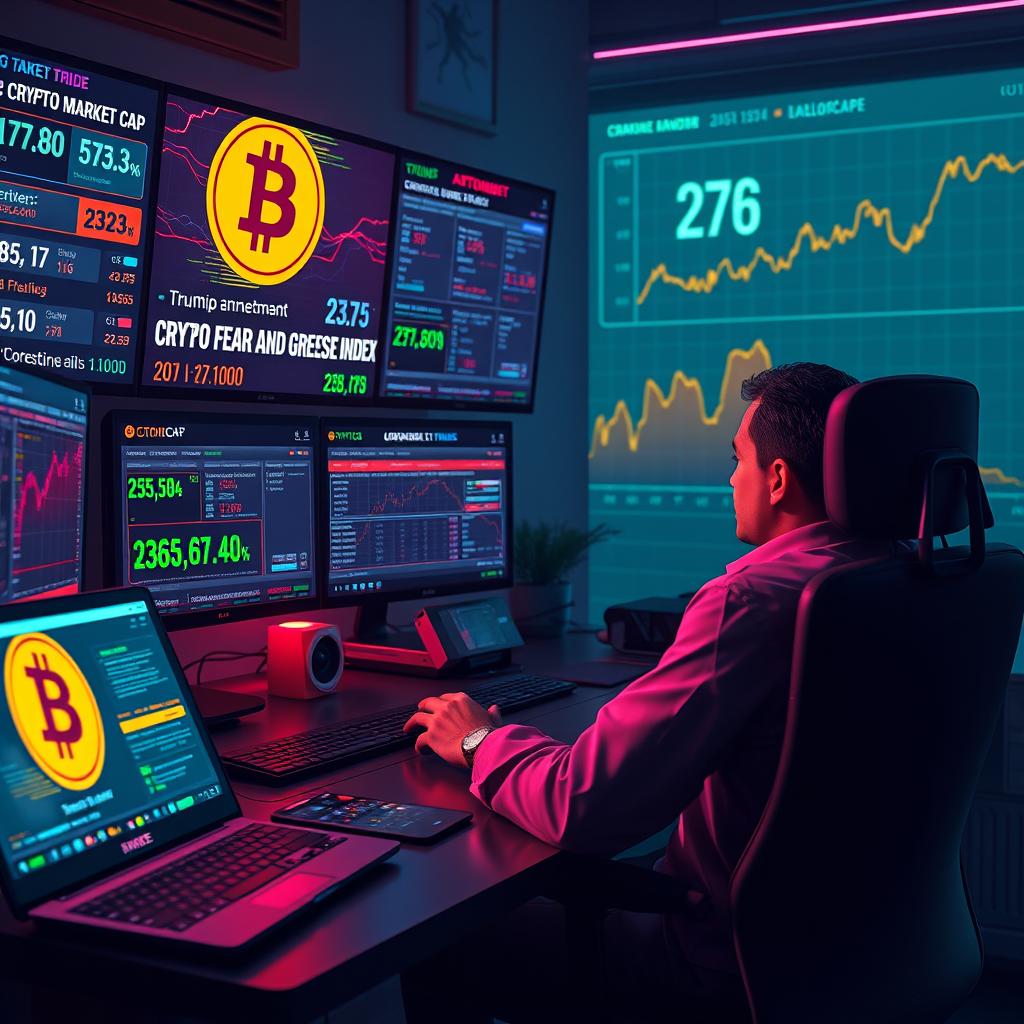Analysis of the Crypto Market in the Wake of Sweeping Tariffs
The recent announcement by President Donald Trump introducing sweeping new tariffs on 185 countries has sent shockwaves through global markets, including the cryptocurrency space. The tariffs, ranging from a baseline 10% to significantly higher rates for select nations like China (34%) and the European Union (20%), have been described as “reciprocal tariffs” aimed at matching the rates other countries impose on American goods.
Immediate Market Reaction
The immediate reaction in the markets was stark, with the S&P 500 losing over $2 trillion in market capitalization within a mere 15 minutes. The Nasdaq 100 futures saw a nearly 900-point swing from peak to trough before closing off session lows. As of the close, Dow Jones futures were down 1.26%, S&P 500 futures fell 1.16%, and Nasdaq 100 futures declined 1.20%. This volatility reflects a broad risk-off move, with investors scrambling to adjust their positions in response to the new economic landscape.
Crypto Market Movement
Cryptocurrencies, which have increasingly moved in lockstep with traditional equities over the last few financial quarters, also felt the impact. Bitcoin dropped 2.3% to around $83,200, while Ethereum shed 4.5% to $1,817, according to CoinGecko data. This correlation underscores the current sentiment that crypto markets are heavily influenced by macroeconomic trends and traditional market performance.
Expert Insights
Joe McCann, founder and CEO of Asymmetric, encapsulated the prevailing view among investors, stating, “Very little reason to own risk here… Crypto is at the behest of macro and traditional markets at this point… Without a clear and distinct catalyst, crypto is simply going to trade like any other risk asset.” McCann also highlighted rising inflation expectations, with one-year inflation swaps climbing above 3.3%, and warned that the tariff shock could potentially push Q2 GDP into negative territory.
Policy and Bipartisan Response
In response to the tariffs, a resolution led by Sen. Tim Kaine (D-Va) to revoke Trump’s emergency tariff powers over Canada has garnered bipartisan support, including from at least four Republican senators. However, the measure faces significant hurdles, including the likelihood of a presidential veto if it were to pass the GOP-controlled House.
Predictions and Outlook
Given the current market dynamics and the introduction of sweeping tariffs, several predictions can be made:
- Continued Volatility: The unpredictability of the tariff announcement and its impact on global trade will likely keep markets volatile in the short term. Investors should prepare for continued swings in both traditional markets and cryptocurrencies.
- Risk-Off Sentiment: The prevailing risk-off sentiment, as expressed by Joe McCann, suggests that without a clear catalyst, cryptocurrencies will continue to mirror the movements of traditional risk assets. This means that any downturn in equities could be echoed in the crypto space.
- Inflation Concerns: Rising inflation expectations, now above 3.3% for one-year inflation swaps, could further dampen investor appetite for risk assets, including cryptocurrencies. This could lead to a decrease in crypto prices if inflation continues to rise.
-
Policy Impact: The outcome of the bipartisan effort to revoke Trump’s tariff powers, though unlikely to succeed, indicates growing opposition to the tariffs. Any future adjustments to these policies could significantly impact market sentiment and, by extension, crypto prices.
-
Growth Risks: The potential for the tariff shock to push Q2 GDP into negative territory, as warned by McCann, presents a significant risk to growth. This could lead to a prolonged bearish sentiment in both traditional and crypto markets.
In conclusion, the introduction of sweeping tariffs by the Trump administration has introduced a high degree of uncertainty and volatility into global markets. As cryptocurrencies continue to move in tandem with traditional equities, investors must closely monitor macroeconomic trends, policy developments, and inflation expectations to navigate the challenging landscape ahead.




